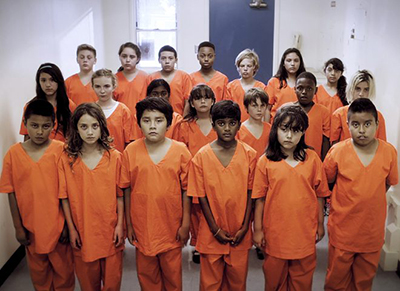By Stacy M. Brown, NNPA Newswire Senior National Correspondent @StacyBrownMedia
Two kindergarteners in Murfreesboro, Tennessee, tried their best to pick a fight, throwing feeble punches at an older and much larger boy who insulted one of their mothers.
Police, having seen the fight online, couldn’t determine which boys were part of these mundane events but arrested 11 other kids – all were Black and all of them in elementary school – who purportedly were there and watched the fight unfold.
According to The Sentencing Project, the children, some of them in handcuffs, were brought to the Rutherford County Juvenile Detention Center. Authorities ran them through an undefined “filter system” that determined some needed to be locked up.
In Rutherford County, roughly half of the arrested kids are detained.
According to Rutherford County Judge Donna Scott Davenport, who approved the detentions, “Being detained in our facility is not a picnic at all. It’s not supposed to be. It’s a consequence for an action.”
Children alleged “action” – watching a fight and not breaking it up – isn’t a crime in Tennessee.
But it folds nicely into new data from the Sentencing Project, which revealed that youth detentions and commitment revealed sharp racial and ethnic disparities.
According to the report titled “Too Many Locked Doors,” youth of color encounter police more often than their white peers and are disproportionately arrested despite modest differences in behavior that cannot explain the extent of arrest disparities.
The disparities in incarceration begin with arrests but grow at each point of contact along the justice system continuum, the authors of the 27-page report found.
In roughly one-quarter of delinquency cases throughout the decade, a youth was detained pre-adjudication.
Moreover, the authors determined that children of color are more likely to face detainment than their white peers when arrested.
Despite states and counties’ traditional reliance on detention when responding to misbehaviors and offenses committed by youth, the scope and impact of youth incarceration in the United States are not fully understood, and traditional counts understate its size.
“Every time juvenile courts decide to confine a young person, even for short stays, devastating and life-long consequences may result,” said Josh Rovner, Senior Advocacy Associate, and the author of the new report.
“Understanding the full scope of kids’ incarceration is critical to protecting youth and ensuring equal justice for youth of color,” Rovner noted in a news release.
The Sentencing Project said the report offers a fresh look at nationwide juvenile courts data, such as the frequency of youth detention after encounters with law enforcement and out-of-home placements after court hearings. More than one in four youth are detained upon their arrest, a ratio that has slightly worsened over the last decade.
In 2019, officials recorded 200,000 instances of youth detained upon their arrest, often for less than two or three weeks. In addition, more than 55,000 times youths were sent to out-of-home placement after their court hearings.
Every other year, a one-day count occurs to provide a snapshot of the extent of youth incarceration; that count overlooks more than four out of five instances of a child or adolescent being removed from their home.
“Too Many Locked Doors” offers a more comprehensive view of youth incarceration.
According to the report, overall, there is far fewer youth in detention and commitment than a decade ago, due primarily to declines in youth offending and arrests.
However, when American children and adolescents are arrested, the juvenile justice system too often detains and commits them.
In addition, the youth of color face even more harsh treatment than their white peers.
The report includes policy recommendations to reduce youth confinement, such as eliminating the detention of young children and those with low-level offenses.
As examples of the systemic underrepresentation of detained youth in the one-day count of those detained or incarcerated, the report notes:
- Thirty-one youths charged with drug offenses are detained for each one measured in the one-day count.
- Twenty-five youths charged with public order offenses are detained for each one measured in the one-day count.
- Seventeen youths charged with property offenses are detained for each one measured in the one-day count.
- Eleven youths charged with personal offenses are detained for each one measured in the one-day count.
“To their detriment, youth of color are treated differently by juvenile courts than their white peers,” the authors wrote.
“They are detained and committed more frequently across offense categories.
“Detentions are often brief and pointless, except to the extent that they are harmful. Even worse, detention disparities have grown. Decisions to commit to out-of-home placement, the most severe punishment the juvenile system has to offer, harm youth of color most often.”
